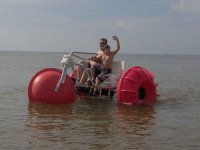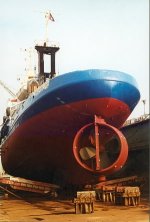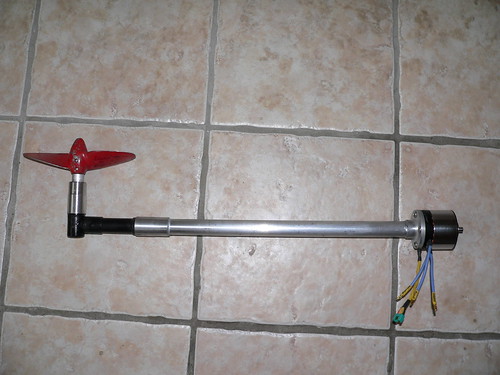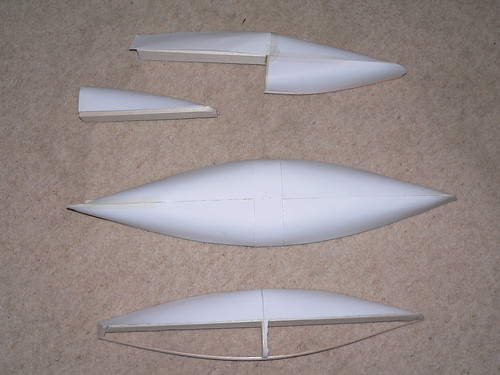Interesting that you mention those props, as I have an old bronze Octura X482 prop sat here on my desk that was machined down slightly and used as a thruster in a small underwater ROV. It was fitted into a Kort nozzle and produced about 10lbs of thrust, I believe, even though it's less than 3" in diameter. It was directly driven by a brush motor at a fairly high rpm, so wasn't too efficient. It looks just like the ones in your picture, though.
I may experiment with using a nozzle, probably a Rice type, to increase prop efficiency at the low cruise speeds I need. All I've read suggests that nozzles can be useful at slow speeds.
I've read the specs on that Torqeedo trolling motor and added them to a list of data I've been collecting on motor power, thrust, boat speed etc that I've been collating to try and get an idea on the sort of real-world efficiency that such a unit can give. As far as I can tell, these trolling motors are optimised to give a high static thrust in order to drive high-resistance fishing boats. For a very low drag boat, like a canoe, the trolling motors are none too efficient. They seem to be designed a bit like "tug boat" propulsion systems, but can probably be improved with a better prop. They do have very high drag underwater parts though, so I'm hoping I can make a significant improvement with a flex drive.
The prop I have to play with (from my junk box) is a two blade, 8" diameter, about 8" pitch alloy one from a small boat inboard motor of some description. It has a hub diameter of about 1 1/4", so has the potential to be fairly low drag. The question to be answered is whether or not it's an efficient shape. Some of the stuff that the human powered boat people have been doing seems to show that higher aspect ratio (longer, thinner) props are more efficient, although the early modelling I've done on what I think are my prop specs seems to show that it might be around 65 to 70% efficient at the speed and rpm I think I'll be running it at.
These drill flex drives have the advantage of being nice and cheap, although it remains to be seen as to how well they stand up to being used like this.
Jeremy








